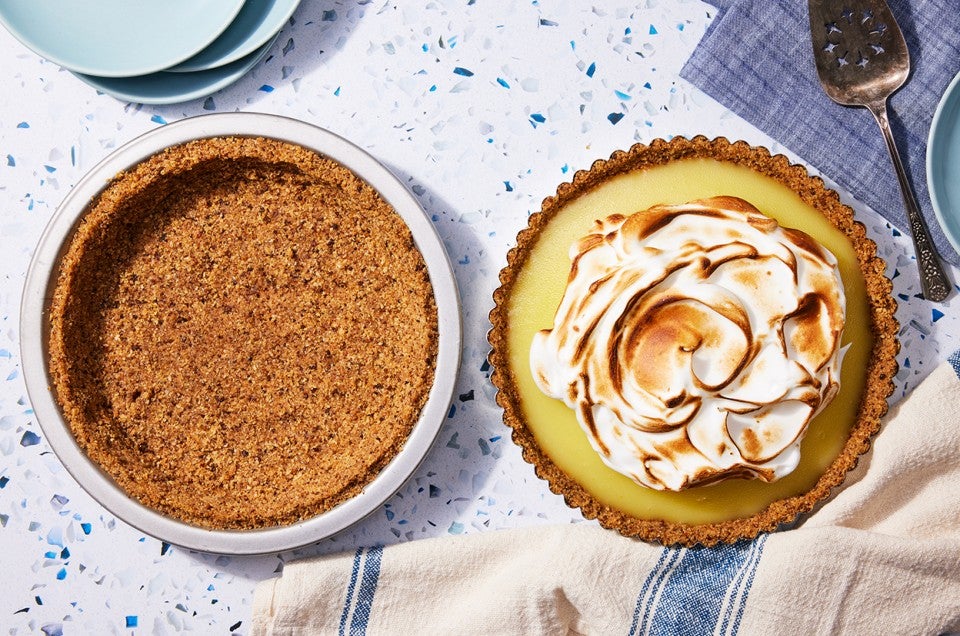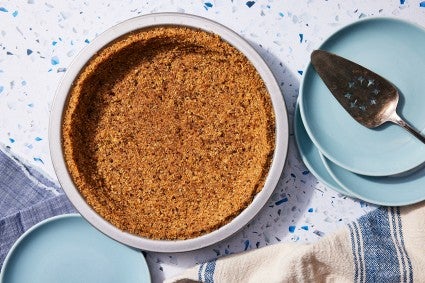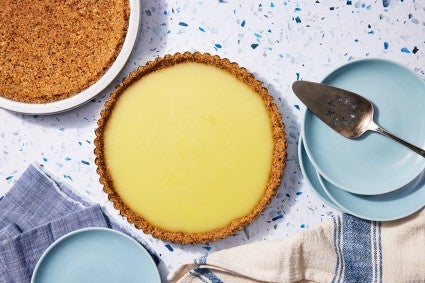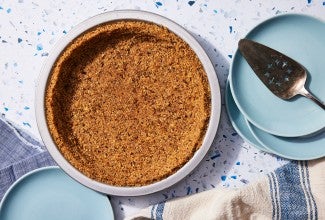The best use for stale bread is ... pie crust?
Our Buttered Toast Press-In Pie Crust is an unexpected use for your breadcrumbs.


If you want to give your stale bread second life, homemade breadcrumbs are the MVP. They’re tastier and fresher than store-bought versions, all while reducing food waste to boot. Breadcrumbs can add crunch to pasta dishes, are an unexpectedly wonderful omelet filling, and, like croutons, give a pop of texture to salads. But what if you took those breadcrumbs one step further, and pressed them into a pie crust?
King Arthur Baking Ambassador Martin Philip writes his own newsletter, The Sassafras Curio, and recently wrote about a lightbulb moment he had when staring at a pile of stale bread (a hazard of the baker's life). He writes, “Could I turn stale sourdough into a pie crust? What if I cubed and toasted slices, then ground them up in the food processor as I would with a graham cracker or saltine crust? Would it taste like buttered sourdough toast?”

The answer is yes. Enter the Buttered Toast Press-In Pie Crust. It starts with the standard process for making breadcrumbs: Dry cubes of bread in the oven and blitz them in a food processor until fine. Then, add softened butter, a few tablespoons of brown sugar, and a big pinch of salt to transform those humble breadcrumbs into a genius press-in pie crust. It tastes like your morning toast was lightly dusted with salt and sugar then transformed into a crunchy, crispy crust.
This formula for bread-turned-pie crust isn’t limited to just crusty sourdough boules or utilitarian sandwich loaves, either. Day-old croissants and stale enriched breads are fair game too. Just keep this in mind: The more flavorful your bread, the more flavorful your pie crust. “I like a blend of different breads in one crust — some darker breads like robust sourdough loaves, contrasting with lighter baguettes,” Martin shares.

From there, let your imagination run wild. After some cross-testing, our Test Kitchen dreamed up combinations like luscious Banana Cream Pie with a chocolate milk bread crust and Vanilla Chess Pie remixed with cinnamon bread crust. Martin used his sourdough crust to make a tangy lemon pie that he topped with a billow of whipped cream, with some sour cream for extra body and flavor. (Get his recipe here.) And if savory pies are more your speed, simply reduce the brown sugar in the crust to 1 tablespoon. (And follow the “Tips” at the bottom of the recipe to make a killer quiche with it.)
Once you’ve decided on your crust and filling combination, ensure the crust is assembled correctly. “Really firmly press the crumbs as you load it into the pan to make a dense, solid crust,” Martin recommends. “My favorite pan is this tart pan, which has a removable bottom that makes serving easy — particularly handy for this more delicate press-in crust.” Using the flat bottom of a drinking glass or measuring cup to press down the crumbs ensures an even, compact crust that won’t crumble. Once the filling is set, you can pop the tart pan bottom out to transfer it to a cutting board, leaving you with a beautifully scalloped edge and easy-to-slice pie.
Bread goes stale more easily in these hot summer months, which is a real annoyance. But once you try this crunchy, toasty crust in your next pie or tart, you might realize that could actually be a good thing.
Watch Martin make Pain de Campagne on YouTube. It's great for toast, even better for pie crust!
Cover photo by Rick Holbrook; food styling by Kaitlin Wayne.


